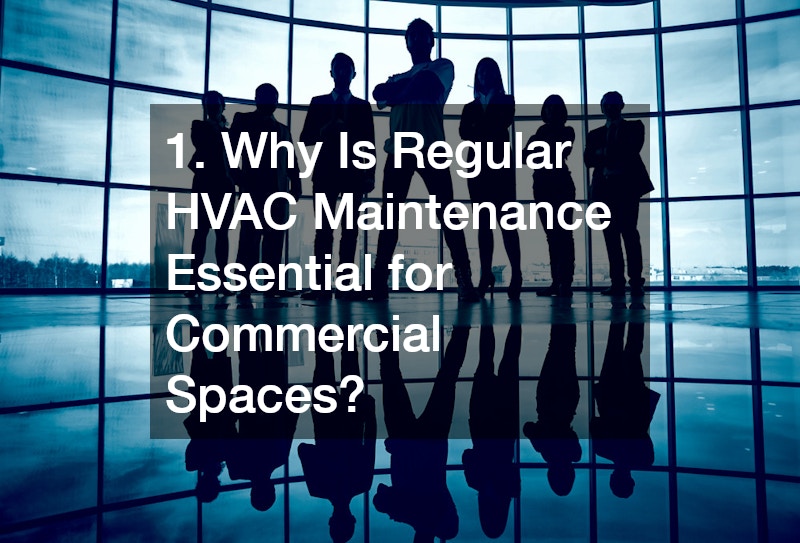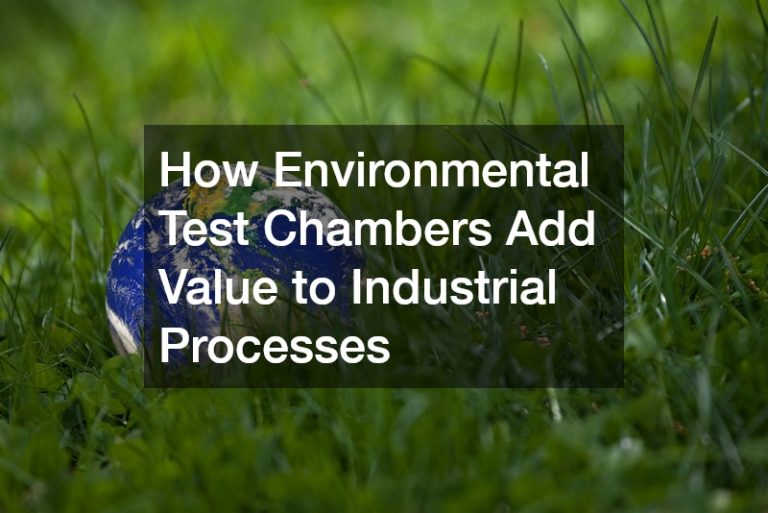
Every commercial business space tells a story about the company it houses. Whether it’s a sleek office, bustling restaurant, or busy retail location, the physical environment shapes customer impressions, employee productivity, and overall brand credibility. Maintaining and upgrading these spaces isn’t just about appearances—it’s about operational efficiency, safety, and long-term asset value.
Neglecting maintenance can quickly lead to costly breakdowns, unhappy tenants, or unsafe working conditions. A leaking roof, inefficient HVAC system, or outdated lighting doesn’t just increase operating costs—it can also hurt morale and reduce a building’s lifespan. Regular inspections, timely repairs, and strategic upgrades protect your investment while projecting professionalism to every person who walks through the door.
In today’s competitive business landscape, customers and employees expect environments that are clean, comfortable, and technologically up to date. Businesses that prioritize proactive facility care reap measurable benefits: lower utility bills, fewer emergencies, and stronger first impressions. Whether you’re managing a single storefront or an entire corporate complex, understanding which repairs and improvements matter most will help you plan wisely and spend effectively.
This article explores ten essential areas every commercial property owner or manager should evaluate—from HVAC upkeep and lighting upgrades to ADA compliance and energy efficiency. Each section outlines why these repairs and enhancements matter, how they affect your bottom line, and which professional services can help you keep your business space in top condition.
1. Why Is Regular HVAC Maintenance Essential for Commercial Spaces?

Heating, ventilation, and air conditioning systems form the backbone of any comfortable work environment. Poor air quality, uneven temperatures, or system breakdowns can disrupt operations and drive up energy costs. Routine HVAC maintenance ensures consistent climate control and extends equipment lifespan, saving thousands over time.
Regular inspections help identify worn belts, clogged filters, or refrigerant leaks before they lead to full system failures. Partnering with a qualified technician guarantees that each component—from ductwork to thermostats—operates at peak efficiency. Clean filters and balanced airflow also promote healthier indoor environments, reducing employee absenteeism and improving overall morale.
Businesses that collaborate with local sign printing companies often share the same philosophy: presentation and functionality go hand in hand. Just as clear signage reflects professionalism, a well-maintained HVAC system signals attention to detail and commitment to quality. For commercial spaces, especially those with high occupancy or sensitive equipment, HVAC performance directly impacts comfort and productivity.
Proactive maintenance plans, including seasonal checkups, prevent unexpected downtime. Over time, these small investments yield lower energy bills, improved system reliability, and a more consistent indoor experience for customers and staff alike.
2. What Are the Benefits of Upgrading Lighting Systems?
Lighting affects everything from employee focus to energy consumption. Upgrading outdated lighting systems to modern LED or smart-controlled fixtures can dramatically reduce utility costs while creating a more appealing atmosphere. Proper lighting improves visibility, safety, and overall mood—factors that directly influence customer satisfaction and worker performance.
LED technology has advanced rapidly, offering longer lifespan bulbs that consume a fraction of the energy used by fluorescent or incandescent lighting. Smart sensors and timers can further optimize usage by automatically adjusting brightness based on occupancy or natural daylight. For large commercial buildings, these upgrades can yield energy savings of up to 60 percent.
Integrating new lighting systems often goes hand in hand with other improvements like commercial roofing updates. Roof design affects natural light access, especially in buildings using skylights or solar panels. Coordinating these projects ensures efficient installation and maximizes energy performance across multiple building systems.
Beyond savings, lighting also shapes brand identity. Retail environments benefit from warmer tones that encourage browsing, while offices perform best with bright, neutral illumination. Upgrading lighting is one of the simplest yet most effective ways to modernize a commercial space.
3. How Do I Ensure My Commercial Space Is ADA Compliant?
Accessibility isn’t optional—it’s a legal and ethical necessity. Ensuring your commercial space complies with the Americans with Disabilities Act (ADA) not only avoids penalties but also demonstrates inclusivity and social responsibility.
Compliance covers much more than ramps and door widths. It includes signage, restroom facilities, parking spaces, and interior pathways that accommodate individuals with mobility, visual, or hearing impairments. Partnering with a contractor who understands ADA standards ensures all modifications meet federal and local regulations.
A commercial security camera system can also play a role in accessibility. Strategically placed cameras can monitor accessible entrances and elevators, providing additional safety for all visitors. Modern systems offer remote access and analytics, helping property managers verify compliance and identify areas needing improvement.
Upgrading for accessibility not only opens your business to a wider customer base but also improves workflow and safety for employees. A space designed for universal access projects professionalism, care, and integrity—all qualities that enhance a brand’s reputation.
4. What Are the Best Practices for Commercial Roof Maintenance?

Your roof protects every other part of your building. Neglecting it invites leaks, structural damage, and energy loss. Implementing a proactive maintenance program is critical for preserving property value and preventing costly emergencies.
Routine inspections—especially after severe weather—can identify cracks, pooling water, or worn materials. Regular cleaning of gutters and drains prevents blockages that lead to water damage. Partnering with an experienced commercial HVAC contractor ensures rooftop units are installed and serviced without damaging roofing materials.
It’s also wise to schedule annual professional assessments. Technicians can detect early signs of membrane deterioration or insulation issues that might not be visible from inside. Early intervention typically costs far less than full replacement.
Maintaining proper documentation of inspections and repairs supports insurance claims and resale value. A well-cared-for roof signals to tenants and investors that the property is managed responsibly. With consistent care, a commercial roof can last decades, providing ongoing protection and energy efficiency.
5. How Can I Improve Office Space Ergonomics?
An ergonomic workspace boosts productivity, morale, and health. Poor workstation design contributes to fatigue, back pain, and repetitive strain injuries, all of which reduce employee performance. Improving ergonomics requires thoughtful furniture selection, proper layout, and adaptable design.
Start with adjustable chairs, desks, and monitor mounts that accommodate different body types. Incorporate standing desks or collaborative spaces to promote movement throughout the day. Lighting, temperature, and acoustics should all support focus and comfort.
Many business owners collaborate with commercial masonry services during office upgrades to reconfigure interior walls or add aesthetic accents like exposed brick or stone. These changes can redefine workspace flow while creating a visually appealing, durable environment.
Investing in ergonomic improvements demonstrates that leadership values employee well-being. It also reduces workers’ compensation claims and absenteeism. Over time, a comfortable, efficient workspace enhances both productivity and company culture.
6. Why Is Updating Security Systems Crucial?
Security is a top priority for any commercial property. Outdated systems expose businesses to unnecessary risk, from theft and vandalism to data breaches and unauthorized access. Modern security technology provides real-time monitoring, remote control, and integrated analytics that traditional systems can’t match.
Today’s advanced solutions include motion sensors, biometric entry, cloud-based storage, and AI-powered video surveillance. Upgrading to these systems protects not only physical assets but also sensitive customer and employee information.
Installing commercial fencing complements digital security by adding a physical layer of protection. Well-designed fences control access points, protect loading docks, and improve perimeter safety. Pairing fencing with smart surveillance gives businesses complete coverage and peace of mind.
An updated security system reassures both employees and clients that safety is a priority. It can also reduce insurance premiums and improve regulatory compliance. A secure business is a stable, trustworthy business.
7. What Are the Key Factors in a Commercial Kitchen Renovation?

Commercial kitchens demand functionality, efficiency, and compliance with health and safety regulations. Whether you’re operating a restaurant, cafeteria, or catering service, a renovation must balance workflow design, ventilation, and durability.
Upgrading surfaces to stainless steel, improving ventilation systems, and optimizing storage layouts can drastically improve performance. Investing in energy-efficient appliances reduces operational costs and aligns with sustainability goals.
Reliable fuel supply is critical for daily operations. Working with a commercial heating fuel provider ensures consistent delivery and proper equipment maintenance. Regular servicing prevents downtime and keeps kitchen temperatures consistent, especially during peak service hours.
When planning renovations, always consider regulatory codes, including fire suppression systems and sanitation standards. A professionally designed kitchen not only increases efficiency but also minimizes accidents and maintenance issues. The end goal is a space that supports smooth operations and leaves a strong impression on both staff and inspectors.
8. How Do Parking Lot Repairs Impact Business Operations?
Your parking lot is the first physical interaction customers have with your business. Cracks, potholes, or poor signage send a message of neglect. Well-maintained parking areas improve safety, accessibility, and the overall visitor experience.
Regular sealcoating, line repainting, and lighting upgrades enhance both aesthetics and functionality. Smooth surfaces prevent vehicle damage and reduce liability for accidents or falls. It’s also smart to ensure clear directional signage and designated handicap spaces that meet ADA standards.
Businesses often pair these exterior upgrades with commercial cleaning services to maintain a spotless, professional appearance across the property. Clean sidewalks, trash-free entrances, and polished glass all reinforce a positive brand image.
Parking lot repairs might seem minor, but they directly affect customer retention and satisfaction. An organized, well-lit, and safe exterior sets the tone for the entire visit and communicates that your business values every guest.
9. What Are the Latest Trends in Commercial Workspace Design?
Modern workplaces are evolving rapidly, driven by hybrid work models, technology, and changing employee expectations. Today’s designs prioritize flexibility, collaboration, and wellness.
Open layouts are being replaced by adaptable spaces that can shift between individual focus areas and team collaboration zones. Natural light, plants, and sustainable materials create environments that feel healthier and more inviting. Integration of smart building systems allows for automated temperature, lighting, and security adjustments based on occupancy data.
Aesthetic upgrades such as accent walls, glass partitions, and creative textures—often completed by commercial roofers or interior specialists—can transform drab offices into modern hubs of creativity. Acoustic solutions, including sound-absorbing panels and noise-reducing flooring, support concentration and comfort.
These design updates are more than cosmetic. They influence productivity, attract top talent, and reflect the brand’s culture. Investing in workspace modernization signals innovation and adaptability—qualities every successful business needs.
10. How Can I Optimize My Building’s Energy Efficiency?

Energy efficiency has become a defining priority for commercial properties. Lowering energy consumption not only reduces costs but also aligns your business with sustainability goals that appeal to clients and stakeholders.
Start with an energy audit to identify waste areas such as insulation gaps, aging HVAC systems, or inefficient windows. Upgrading to energy-star appliances, programmable thermostats, and high-performance insulation can deliver long-term savings.
Working with commercial roofing services can further improve efficiency. Modern roofing materials, reflective coatings, and proper insulation reduce heat absorption and maintain consistent indoor temperatures. Coupled with solar integration or green roofing, these upgrades dramatically cut energy use and carbon footprint.
Additionally, motion-activated lighting, automated building management systems, and energy monitoring software provide precise control over consumption. Over time, efficiency improvements not only pay for themselves but also enhance property value and attract eco-conscious tenants.
Sustainability is no longer a niche—it’s a competitive advantage. Businesses that optimize energy use position themselves as forward-thinking leaders committed to environmental responsibility and financial prudence.
A well-maintained commercial property is more than a physical space—it’s a reflection of your brand’s standards, priorities, and professionalism. By investing in timely repairs and thoughtful upgrades, business owners can prevent costly disruptions, improve employee well-being, and deliver better customer experiences.
From HVAC maintenance and roofing to lighting, security, and energy optimization, every improvement adds measurable value. Partnering with reputable service providers ensures the work is done efficiently and safely, protecting your investment for years to come.
Ultimately, caring for your commercial space isn’t just maintenance—it’s strategy. It strengthens your company’s image, boosts operational performance, and creates an environment where employees and customers feel confident and comfortable. Regular upgrades are not expenses; they’re long-term commitments to growth, safety, and success. If you are the owner of a business or a commercial property, do not hesitate to upgrade your space!



